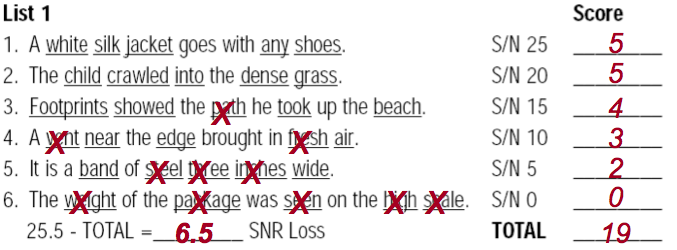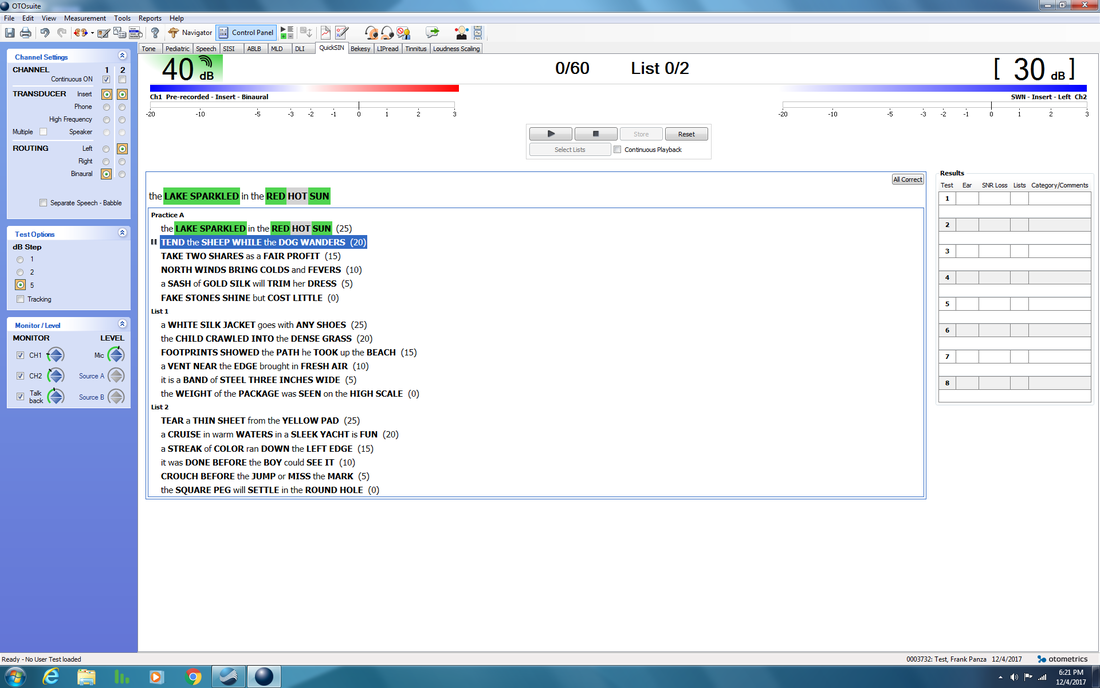QuickSIN (Quick Speech In Noise)
Purpose
The Quick Speech-In-Noise is a highly efficient instrument for clinical use, in which one test sentence is presented against a speech babble of each of six Signal to Noise Ratios from +25 dB to 0 dB. The patient's task is to repeat the sentences, each of which contains five scorable key words, and the SRT in noise is found.
Materials
Audiometer, speech babble sentences with increasing signal to noise ratios, transducer.
Procedures/Instruction
A set of practice sentences followed by two sets of scored sets are administered to the patient with one point assigned to each underlined word. The total sum of all levels is subtracted from 25.5 to assign the SNR loss for the patient.
LIsts that should be used: Practice 1, 2, 6, 8, 10, 11, 12, 15, 17
LIsts that should be used: Practice 1, 2, 6, 8, 10, 11, 12, 15, 17
Interpretation/Site of Lesion
A lower SNR indicates better speech perception in noise and a higher SNR indicates poorer speech perception in noise. This is so because +6 dB SNR means that the speech has to be 6 dB stronger than the noise for the patient to get 50% of the items right, and +14 dB SNR means that the patient needs the speech to be 14 dB stronger than the noise. Thus, the SNR approach gives us a straightforward way of assessing the patient's speech recognition ability in noise. In fact, we can express a patient's signal-to-noise ratio loss (SNR loss) as the difference between his SNR and an average value obtained by normal-hearing listeners.
Management
Works Cited
Gelfand, Stanley A. Essentials of Audiology. Thieme, 2016.
DeRuiter, Mark, and Virginia Ramachandran. Basic Audiometry Learning Manual. Plural Publishing Inc., 2017
DeRuiter, Mark, and Virginia Ramachandran. Basic Audiometry Learning Manual. Plural Publishing Inc., 2017

